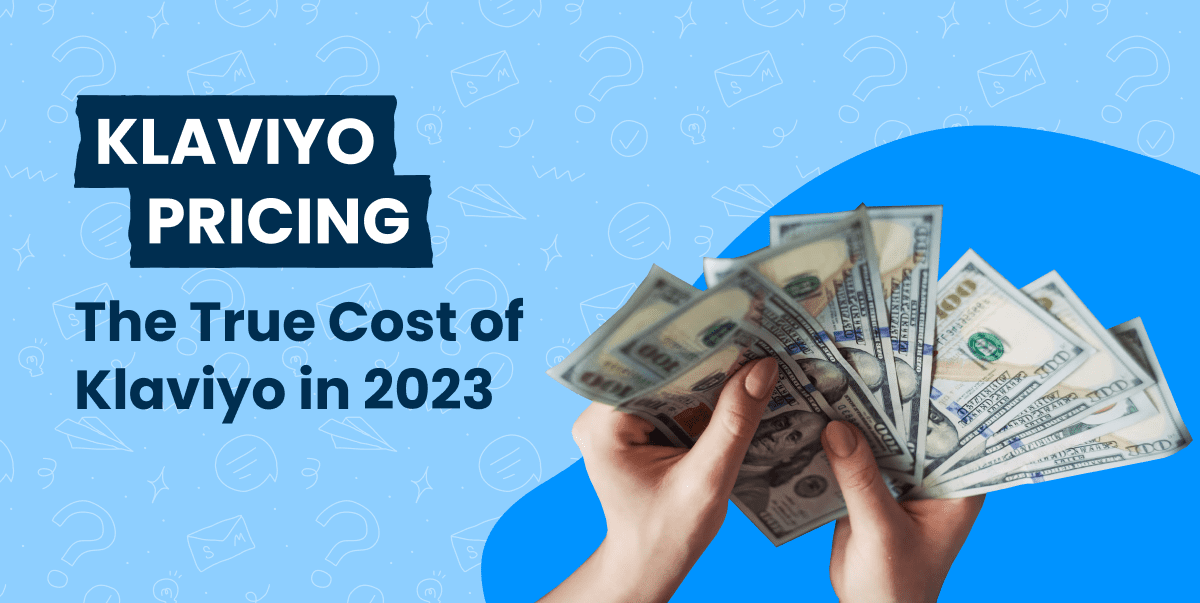If you’ve ever searched online for an email app for your online store, chances are you’ve heard of Klaviyo.
There’s hardly a list of marketing automation apps that doesn’t include Klaviyo. This is fair enough, considering it’s one of the most downloaded apps on the Shopify app store.
Whether this popularity was a factor in Klaviyo’s recent decision to increase their prices for their larger customers or not, we’ll likely never know.
What is known though is that the changes to the pricing Klaviyo charges their customer has got some merchants wondering if the app is still worth the cost in 2022.
So let’s look at the different Klaviyo pricing plans, the recent changes, what the true cost of Klaviyo is, and whether it’s is still worth the price for your store.
What pricing changes did Klaviyo make?
Earlier this year, Klaviyo announced that they would introduce some changes to their pricing. These changes included:
- Price increases for their larger customers
- The removal of unlimited email sends
- Changes to their SMS pricing model
- The introduction of a new enterprise-grade pricing tier, called Klaviyo One
Klaviyo’s SMS pricing has also been increased in response to higher carrier costs. Users are now charged for a set number of SMS credits that they can then use to send SMS or MMS messages each month.
In terms of email marketing, send volumes are now capped at 10x the number of contacts you have. So if you have 1,000 customer contacts, you can send up to 10,000 emails per month.
To help put this in context, let’s take a quick look at how email marketing platforms generally charge their users.
Ready to move off Klaviyo and automate the same Email and SMS automations for a fraction of the price?
Install SmartrMail and request a free migration from Klaviyo
How email marketing pricing and Klaviyo pricing work
Generally, email marketing platform will charge their users based on one of two methods: how many people are on your list, or how many emails you send per month.
For example, some email apps charge based on how many emails you send. Regardless of how many email contacts or subscribers you have.
Klaviyo, on the other hand, charges based on how many email contacts you have. However, they also cap the number of emails you can send per month at 10x this number. But whether you send 1 email per subscriber or 10, the price you pay will remain the same.
This approach to charging based on how many email contacts or subscribers you have can also be broken down into two different systems: a metered approach where your cost increases gradually as you grow your email list, or a tiered system.
Klaviyo uses a tiered system where the price will remain the same for a list size within a certain range of email contacts (such as 1,501 and 2,500). So as soon as you hit 2,501 contacts, your pricing will jump up to the next tier.
At SmartrMail, we instead use a metered system that avoids sudden large increases in price because you’ve hit a certain threshold.
The difference between email contacts and subscribers
Beyond charging based on email send volume or list size, and whether that takes a metered or tiered approach, the other big difference in how email apps calculate pricing is based on the concept of contacts and subscribers.
So far, we’ve used both terms and if you’re not aware of the difference, you might be wondering why.
The fact is there’s an important difference between someone who is just an email contact and someone who is an email subscriber.
An email subscriber is someone you can send marketing messages to. While these people are also referred to as email contacts, the term contact also includes people who you cannot send marketing messages to. These people can be referred to as ‘non-opted-in email contacts.’
You may have ‘non-opted-in email contacts’ on your list because they’ve unsubscribed from your email marketing, or they never subscribed to begin with but made a purchase from your store.
The bottom line is that the term ‘email contact’ includes both subscribers and non-opted-in email contacts.
Klaviyo charges based on email contacts, not subscribers
This distinction between some who is just an email contact and someone who is also a subscriber is not just important to ensure you remain compliant with regulations such as CAN-SPAM or the GDPR.
It can also affect how much your email app charges you.
Some email apps, including Klaviyo, will include all your email contacts when they calculate which pricing tier you fall in. Meaning you’re charged for contacts you cannot send marketing messages to.
However, other email apps, including SmartrMail, will only consider email subscribers when calculating your price.
This means you’re only paying for email contacts you can actually send marketing emails and automations to. And if someone ends up unsubscribing from your email marketing, you will no longer be charged for them.
The same is also true if an email address between inactive (such as if a customer closes their email account) and emails can no longer be delivered to that address. You’re no longer going to be charged for having that address in your email list.
Klaviyo, however, will still consider them an email contact and charge you accordingly.
Is Klaviyo worth the cost?
There’s no denying that Klaviyo is one of the more advanced and sophisticated email automation apps available to merchants. It’s also one of the more expensive options for your store.
This means Klaviyo can be a worthwhile option if you’re a larger store looking to make use of the advanced automation and segmentation features. Unless you’re setting up highly custom and intricate email flows though, chances are you’ll never end up needing these advanced features.
Unless you’re looking to make 20 app work together to make an overly customized email, other email apps such as SmartrMail will cover all your email marketing needs without you needing to pay for the more advanced features.
Even if you are a large sender that might benefit from these advanced features, Klaviyo’s recent price increases for larger stores mean you should still question whether Klaviyo is worth the cost.
For small stores, or if you’re just getting started with email marketing, then it’s worth considering the free plans.
Klaviyo has a free tier for merchants with an email list size of up to 250 contacts. However, it has a monthly send limit of 500 emails. That’s potentially up to 2 emails per contact.
SmartrMail also has a free tier for merchants with email lists of up to 1,000 subscribers. The email send limit is also higher at up to 5,000 emails per month. That’s up to 5 email newsletters and automations per subscriber per month.
You can view a more detailed comparison of Klaviyo vs SmartrMail here.
Whether you’re a current Klaviyo customer and unhappy about the recent price changes, or are just looking for a new email app, we’re here to help free migration from Klaviyo or any other email app.
Mention this post, and one of our email experts will jump on a free 1-on-1 coaching call to to discuss the best approach to email marketing for your store’s unique needs.




